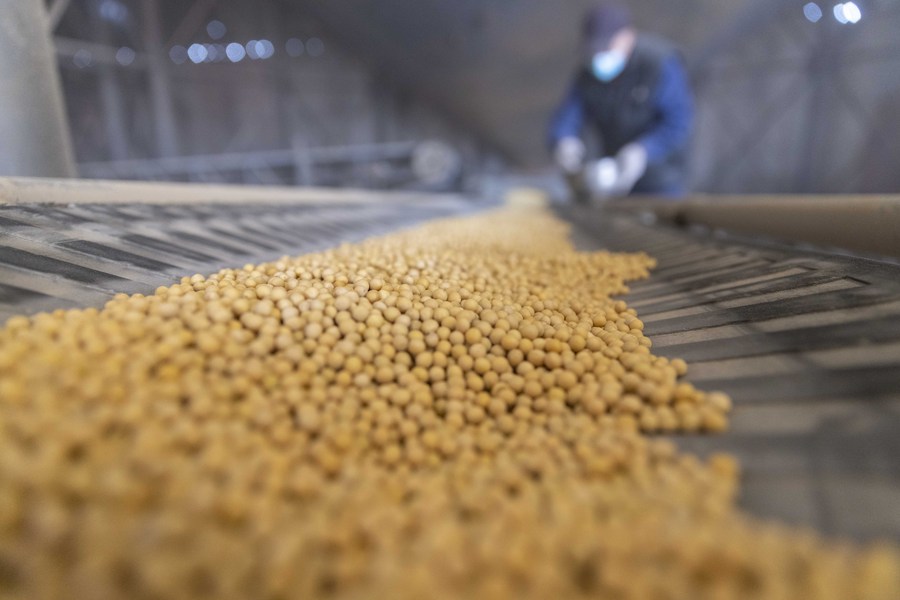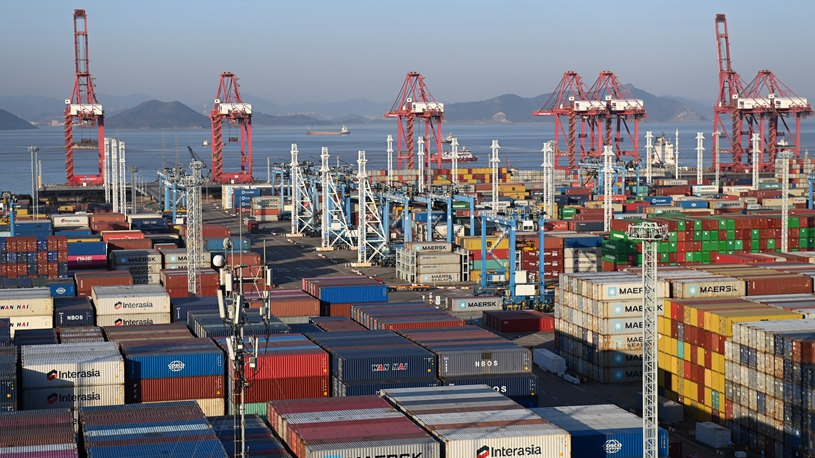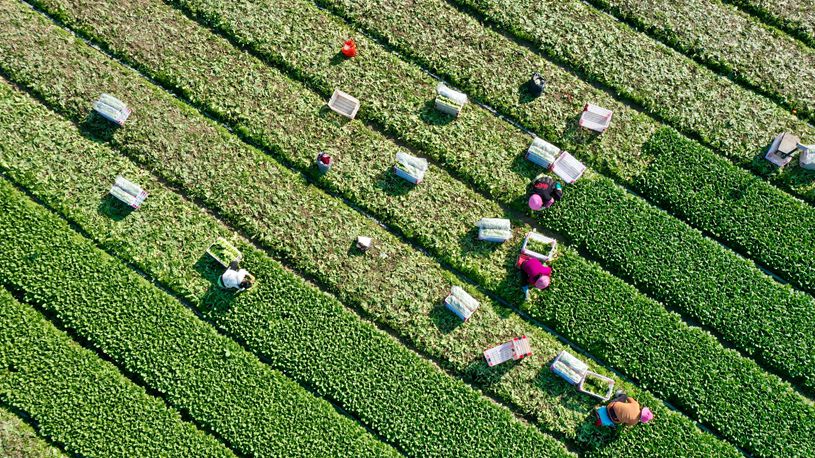
A staff member performs quality testing on randomly-sampled soybeans at a grain trading company in Suihua of northeast China's Heilongjiang Province, Oct. 25, 2022. (Xinhua/Zhang Tao)
BEIJING, Feb. 2 (Xinhua) -- Researchers from the Chinese Academy of Agricultural Sciences (CAAS) recently mapped the geographic distribution of soybean nutritional compositions in China.
Researchers believe that the study, which was published in the journal Food Research International, provides scientific evidence for guiding the construction of high-quality soybean production bases in China.
According to Han Tianfu, a researcher at the Institute of Crop Sciences of the CAAS, as one of the major food crops, soybean is grown across a broad ecological region in China, with considerable variations in environmental conditions, and diverse seed compositions of soybeans in the different regions.
However, the geographical distribution patterns of soybean quality in China had been unclear for a long time, due to the lack of large-scale sampling and multi-trait analysis data from actual production, Han said.
To clarify the spatial patterns of soybean seed compositions, researchers collected 1,792 soybean samples from a vast range of soybean planting areas across 29 provincial-level regions in China, spanning the period from 2010 to 2017.
Through quantifying and analyzing the crude oil, protein, and 11 categories of functional components of the samples, researchers unveiled a visual geographical distribution map of different nutrients in soybeans.
According to Han, from north to south across China, the map presented a clear increasing trend in contents of crude protein and dietary fiber, and a decreasing trend in contents of crude oil, phospholipids, saponins, and carotenoids.
In addition, soybeans with a high-level of total oligosaccharide were concentrated in the central region.
Based on the nutrients distribution map, weather conditions, and cultivation systems, researchers divided the soybean production areas in China into three regions and 10 sub-regions. They then proposed a regionalization scheme of soybean seed quality for guiding high-quality edible soybean production.
According to Han, the northern part of China's northeast region has a unique advantage in developing functional edible soybeans, and it is advisable to focus on the production of edible soybean raw materials such as soy milk, tofu and bean sprouts in this region.
Meanwhile, the central and southern parts of the northeast region are suitable areas for high-oil, high-yield soybeans, and it is advisable to establish a concentrated production area for high-oil soybeans to enhance China's self-sufficiency in soybeans for oil.
As to the southern part of the Huang-Huai-Hai region, the soybeans there have high protein content and the area can be used as a raw material base for protein processing, the researcher added. ■












